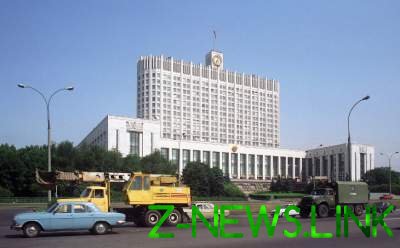 Colorful pictures from around the world.
Colorful pictures from around the world.
So, what were the streets of the world a quarter century ago? How much they differ from the modern?
By 1992, the motorization of developed and newly industrialized capitalist countries of the “Third world” was completed long ago, she had just reached the limits of capacity of the urban space. And in some places advanced minds of urban studies has begun to realize the abnormality of this situation, although the beginning of the pedestrian “reconquest” was still quite far away.
On the other hand, in the world there was a huge space, still poorly conquered by car: the countries of the former Soviet bloc, China, India, and the poorest Nations of the “Third world”. It is in these regions for a quarter century will experience the most dramatic changes.
Finally, in 1992, the planet remained a separate “Islands” with minimal levels of car ownership, such as North Korea and Vietnam.
Let’s start with the former USSR. In the first year after its collapse in most former Soviet republics due to poverty and shortages of petroleum products, the number of cars on the streets has markedly declined since the late Soviet times. The fleet is 99% remained Soviet, although the roads are increasingly flashed “distillation” used cars.
1. At the top is a typical Moscow traffic in the summer of 1992 at the walls of Parliament.
The structure of urban transport were also more Soviet. The invasion of minibuses was yet to come, and the era was bombed was just beginning. Moscow still worked the old yellow taxi, which in a few years will disappear as a class and turn into half-forgotten concept from the past for a whole generation!
Taxi from Kursk station in Moscow, 1992
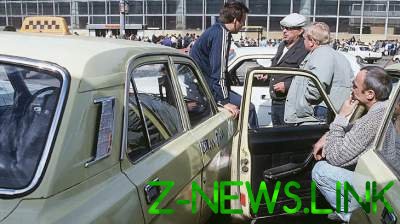
2. Incredibly, even in Kaliningrad in 1992 was almost imperceptible cars:
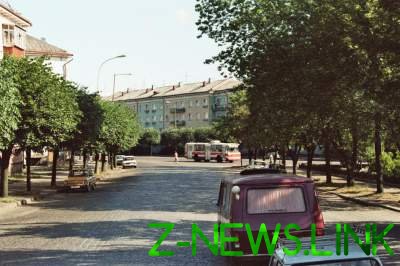
3. Almost all post-Soviet republics an essential form of urban transport was the tram, which will begin its mass extinction only after 5-10 years after the end of the Soviet Union.
Tram in Rostov-on-don, 1992:
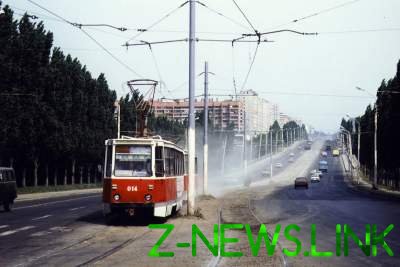
4. Dnepropetrovsk, 1992:
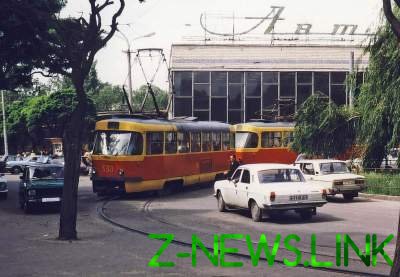
5. Outside the former Soviet Union the most exotic in terms of urban transport looked like Cuba, North Korea, Vietnam and Albania.
This kind of bus in Tirana 1992 gives a very clear idea of the situation:
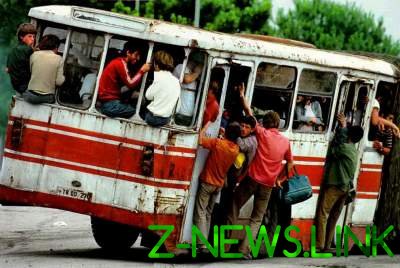
Such was the legacy of 33 years of total isolationism. But just a few years, the Tyrant will be “capital of second-hand Mercedes”.
6. Vietnam 1992 to mu for several years continued market reforms, but still modest results in a greater degree was evident in the “economic capital” of the country — Saigon. Mostly in the form of advertising banners on the main streets. Private cars in the city then still almost was not, and many old (Franco-American) fleet somewhere mysteriously disappeared in 1975.
In the political capital Hanoi life outwardly looked almost as well as in times of “war communism” of the 1960s:
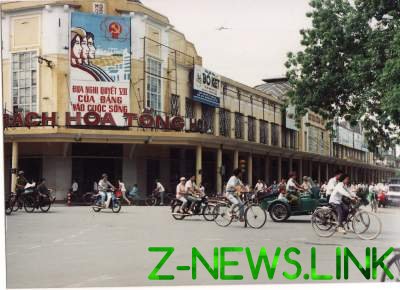
After a few years, cyclists will finally displace the scooters and only after two decades on the streets of Hanoi will appear appreciable number of cars (even have to start the construction of autoestrada).
7. It seems that between the urban lives of two East Asian Communist States in 1992 were a gap — looks so striking comparison of Hanoi and Pyongyang those times!
Just a masterpiece photo of Pyongyang, 1992:
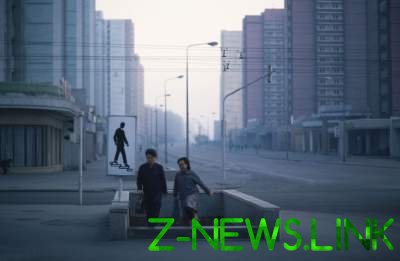
In one shot instead of almost the whole of the then Juche urbanism with the absurdity of underground passages through the empty streets.
Now, however, they’re not empty. In recent years, the number of vehicles in the DPRK is growing exponentially. Do not be surprised if in ten years half of Russia will go on the Juche foreign cars.
But China in 1992, has already reached the production level of 1 million vehicles (5 million in 1985!). Now they produce 25 million pieces a year and the difference is obvious: not enough for a 3-4-5-tier interchanges. A quarter of a century ago the machine just started to fill in the major thoroughfares of Chinese cities.
8. Reconstruction of the Bund in Shanghai, 1992:
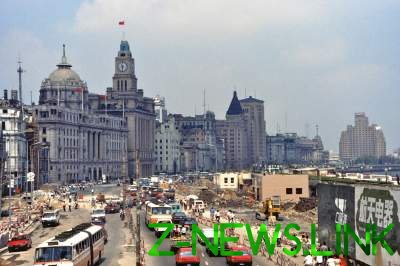
9. The city authorities already were smart enough to create a comfortable environment for pedestrians in the most attractive location, “economic capital” of China:
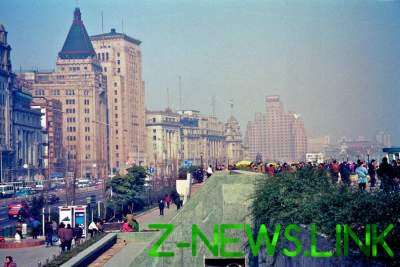
10. But it was only the first sign and at that time, rather the exception. In General, the authorities of Chinese cities had engaged in a rigid separation of pedestrian and automobile flows, forcing people behind the iron fences and the air passages.
In the same Shanghai in 92-m was desperately trying to clear the main shopping street Nanjing Road (local Arbat) for vehicles with high fences:
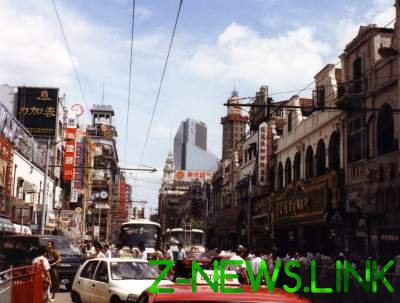
11. Beijing’s main Avenue in 1992 looked a bit bare still. And it lacked any of the exotic!
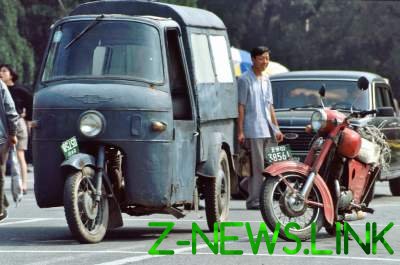
12. In the former socialist countries of Eastern Europe since 1992 almost everywhere there was a transition from the moderate motorization to the limit. In this case the transport infrastructure is old historical cities were quite conservative. Externally, most strongly changed, perhaps East Berlin.
The station at Friedrichstrasse in 1992:
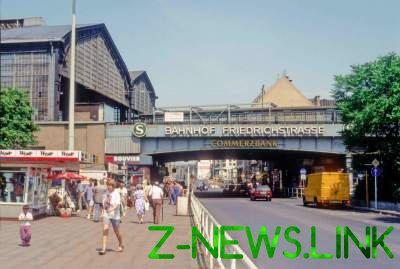
13. And, of course, the old Gdrovsky fleet in 1992 remained only in the memories:
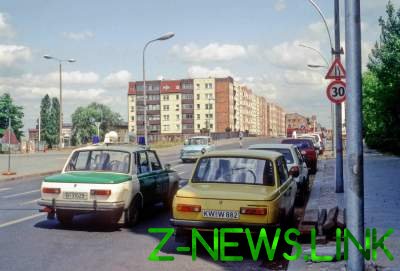
14. The fleet of Budapest in 1992:
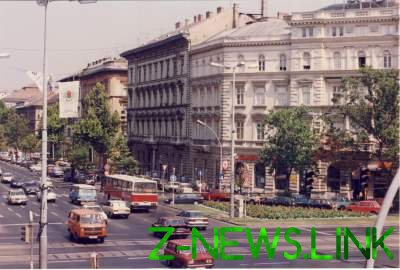
15. Warburg, Trabant and Barges:
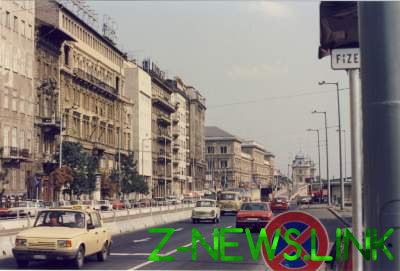
16. All the color of socialist industry:
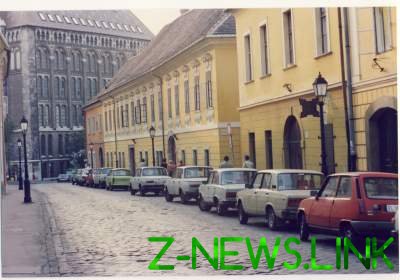
17. Let us now see what were in 1992, the streets of big cities of the “Third world”. They seem to be all so similar to each other, but if you look closely, you can see some local specifics and even exotic.
The huge metropolis of Jakarta to 1992, mu has finally turned into a “city car”:
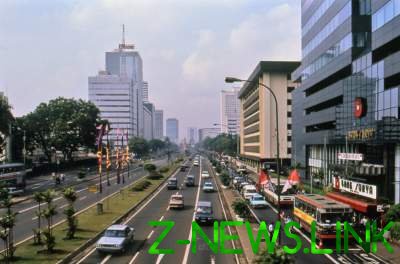
After a couple of decades this city was waiting for a complete collapse of the transport and frantic attempts to rebuild the city roads for public transport.
18. Surprisingly, one of the largest cities in the world Cairo has kept its tram system, created in the 19th century. These carriages remained an inseparable part of his middle Eastern flavor:
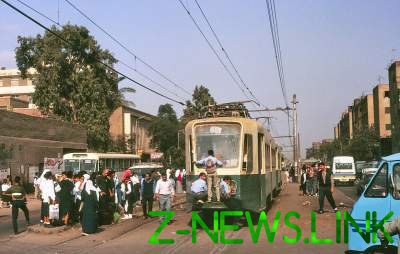
A very wise decision! By the way, in 2013, it was announced that will run a modern tram line from Central station in Nasser city in New Cairo, is able to withstand the traffic flow up to 30 thousand passengers per day.
19. Extremely usually looked a quarter century ago, the streets of Indian cities. Not only because of the crowds motley crowd, and the ubiquitous “tuk-tuk”, but not smaller due to overhanging vehicles. Its symbol was the Ambassador — Indian car manufactured by Hindustan Motors car factory. Its production started in 1957, and with minor modifications and improvements continued until 2014!
Due to the vagaries of Indian capitalism foreign cars into the country is almost not imported, and their production until the 2000s, was meager.
Therefore, Parking at the airport of Calcutta in 1992 looked like this:
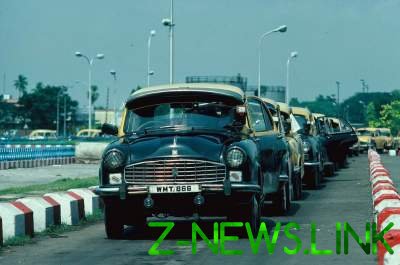
A quarter century later, India has become one of the leading automakers of the world (5th place), but “Ambassadors” are still found on every corner.
20. Another town with an archaic transportation in 1992, the Burmese capital Rangoon. There since 1962 built a sort of socialism, and cars almost never imported. Since 1988, the country went abrupt changes, but 25 years ago they didn’t really affect the flavor of the local streets:
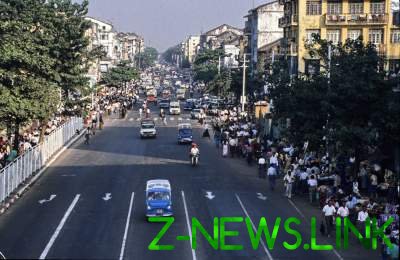
Now there is the usual metropolis “Third world” with the giant traffic jams and thoughtless construction of autoattacked.
21. Perhaps the most unusual and “exotic” in 1992, there were streets not in Korea and Vietnam, and in those Third world countries where there was war. There city life is completely degraded and the whole infrastructure has dropped to medieval levels. Just look at one of the main streets of Kandahar in ‘ 92:
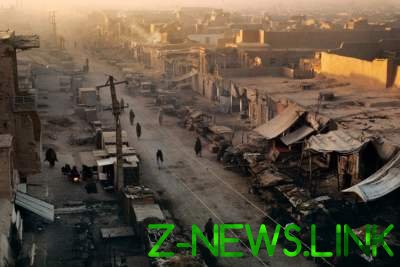
22. Half of the world’s megacities in the year 1992, and not always the richest, already face the problem of chronic traffic jams, i.e., a crisis of sverhkategorijnye. Bangkok 1992 also came to success:
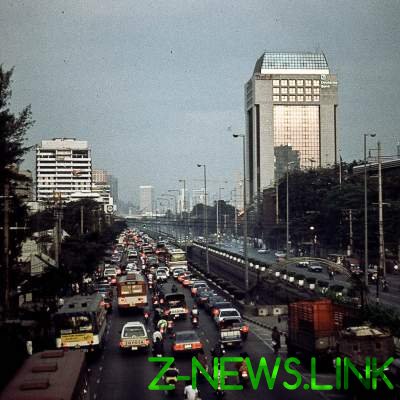
Here one of the first in the “Third world” embarked on a dead end road urban autoattacked.
Of course, the streets of developed countries for 25 years has not changed as much. The main changes have affected the appearance of the Bicycle infrastructure and expanding the pedestrian spaces. Connoisseurs will, of course, note and changes in car design.
23. London — a symbol of conservatism, its classic look seems almost the same:
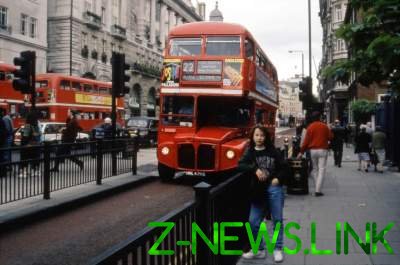
But here, time is relentless. “Eternal” Routemaster walking through the city streets from 1956 to 2005 is now history! Wonder they put it down, might leave on the trails at least a dozen on the rights of the “heritage tram”, to the delight of local and tourists.
24. In the “eternal city” Rome, a step change is also very slow. Moreover, in its historical district. Famous the brainchild of fascist urbanism Via dei Fori today is not very different from how it looked in 1992:
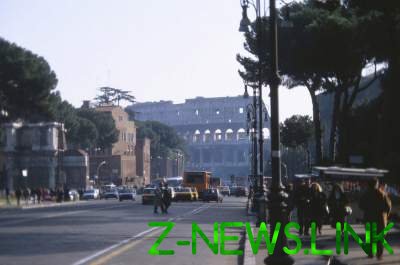
It seems to be a bike lane added and restricted the movement of private cars. But to ban all traffic on it is not yet possible. Only on Sundays, the Via dei Fori becomes a pedestrian.
25. Another conservative European city, Vienna, had carefully kept its tram transport:
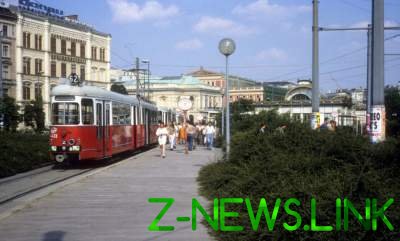
26. Chicago 25 years ago:
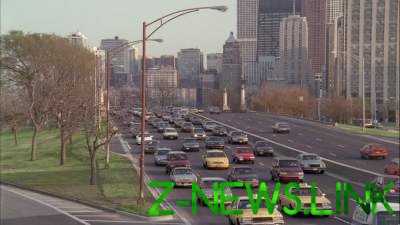
27. In the angular shapes and dimensions of the machines still read echoes fashion of the 1970s, which things the us auto industry unlike any other.
The Avenida 9 de Julio in Buenos Aires, 1992:
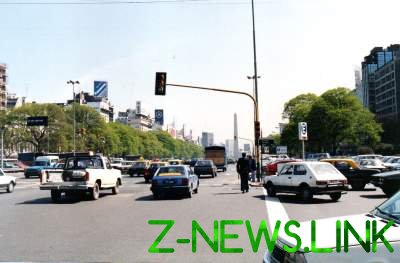
28. Please note that the Argentines were in the area of influence of the European, not the American automobile fashion! But for all its Europeanness of Argentina is still a little bit country “Third world” and the pomp of ceremonial Avenida do its capital in 1992 enlivened cheerful colorful buses:
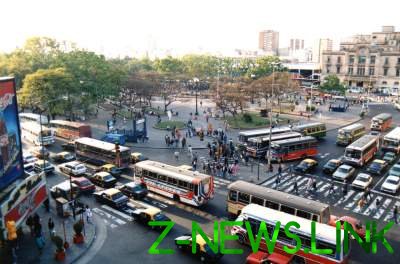
© 2017 – 2019, paradox. All rights reserved.





